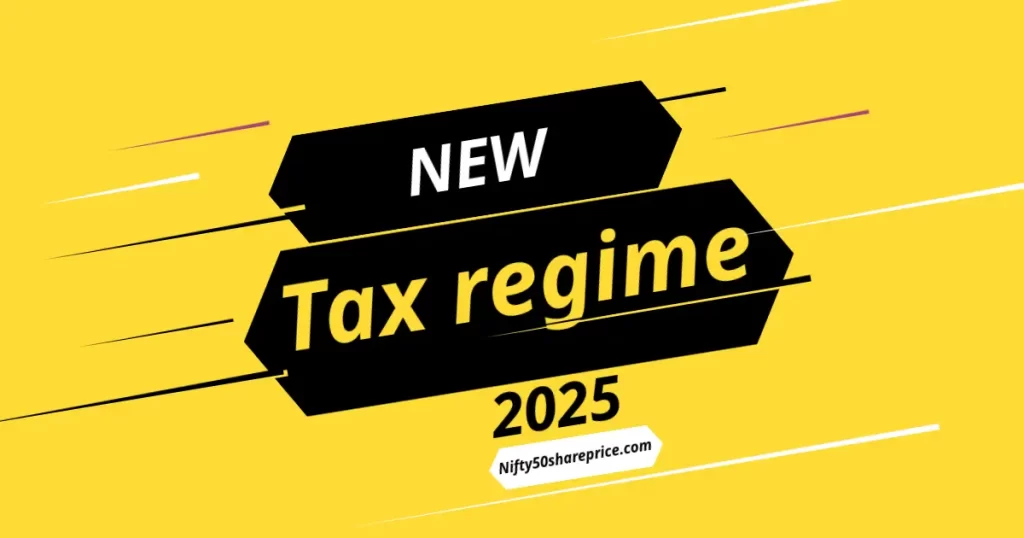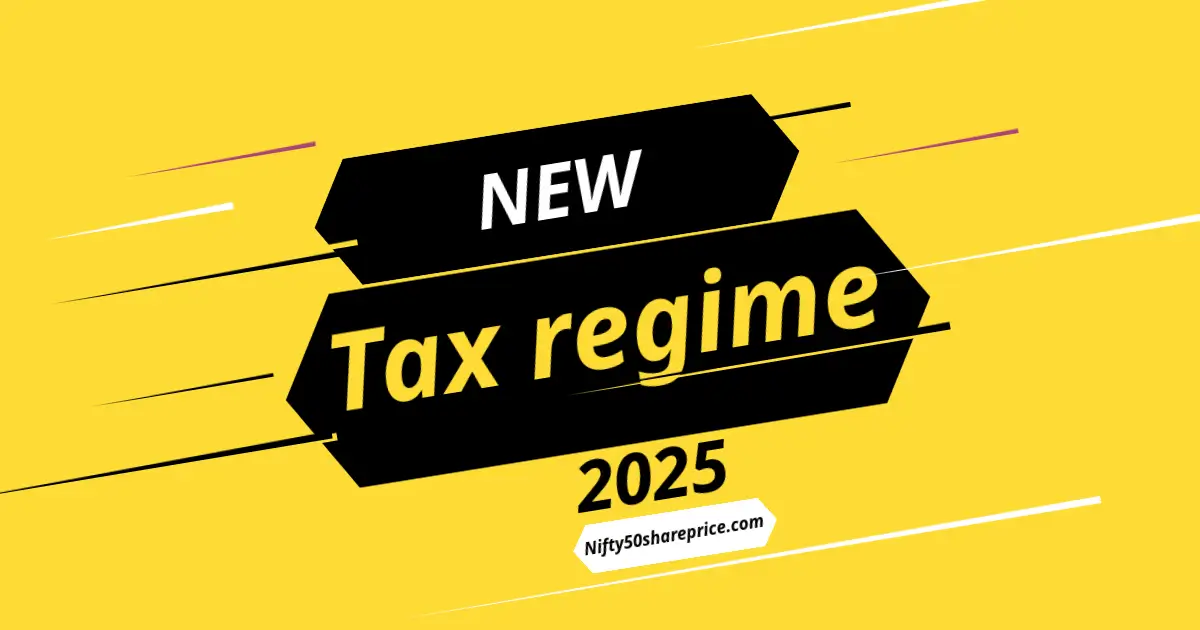New tax regime 2025: The 2025 Union Budget introduced several key reforms, and one of the most significant changes is the revised income tax slabs aimed at providing relief to salaried individuals, especially from the middle class.
Finance Minister Nirmala Sitharaman in her eighth consecutive Budget announcement has made significant adjustments to the tax structure, but many taxpayers are still unclear about how these changes will directly impact them.
In this article, we break down the changes and answer some of the most common questions regarding the Old Regime vs New Regime tax slabs.
What Are the New Income Tax Slabs?
The revised tax slabs under the new tax regime have been a key highlight in the 2025 Budget. These adjustments are meant to benefit salaried individuals by reducing their tax liabilities.
Here’s how the new tax structure looks for individuals under the new regime:
| Income up to ₹4 lakh | Zero Tax |
| Income between ₹4 lakh to ₹8 lakh | 5% Tax |
| Income between ₹8 lakh to ₹12 lakh | 10% Tax |
| Income between ₹12 lakh to ₹16 lakh | 15% Tax |
| Income between ₹16 lakh to ₹20 lakh | 20% Tax |
| Income between ₹20 lakh to ₹24 lakh | 25% Tax |
| Income above ₹24 lakh | 30% Tax |
How Have the Slabs Changed in 2025?

The 2025 Budget has brought several key changes to the existing tax slabs. Let’s break down what has changed:
1. Zero Tax Ceiling Increased: The income level for which no tax is applicable has been raised from ₹3 lakh to ₹4 lakh. This means individuals earning up to ₹4 lakh will pay no income tax.
2. 5% Tax Slab Shifted: The 5% tax slab has been extended from the earlier range of ₹3 lakh-₹7 lakh to now cover ₹4 lakh-₹8 lakh.
3. 10% Tax Slab Extended: The previous ₹7 lakh-₹10 lakh tax bracket has been revised to ₹8 lakh-₹12 lakh.
4. 15%, 20%, 25%, and 30% Brackets Updated: The higher tax brackets (15%, 20%, 25%, and 30%) have now been updated and extended as follows:
- ₹12 lakh-₹16 lakh: 15% tax
- ₹16 lakh-₹20 lakh: 20% tax
- ₹20 lakh-₹24 lakh: 25% tax
- Above ₹24 lakh: 30% tax
These changes are designed to provide greater relief to middle-class taxpayers and make the tax system more progressive.
How Will Income Up To ₹12 Lakh Be Tax-Free?
For those earning up to ₹12 lakh, the government is offering significant rebates to reduce the tax burden further. This means that individuals with annual earnings of up to ₹12 lakh can enjoy tax-free income through various rebates and deductions, including a standard deduction of ₹75,000.
For example:
An individual earning ₹8 lakh annually will receive a rebate of ₹10,000. Someone earning ₹12 lakh will receive a rebate of up to ₹80,000, making their tax burden significantly lower.
The government has introduced these rebates to encourage more spending and economic activity while providing relief to the salaried middle class.
What Happens If Salary is ₹16 Lakh Per Year?
If you earn ₹16 lakh annually, the tax calculation would go as follows:
| Income up to ₹4 lakh | No tax |
| Income between ₹4 lakh-₹8 lakh | 5% tax, which amounts to ₹20,000 |
| Income between ₹8 lakh-₹12 lakh | 10% tax, which amounts to ₹40,000 |
| Income between ₹12 lakh-₹16 lakh | 15% tax, which amounts to ₹60,000 |
Thus, the total tax for someone earning ₹16 lakh would be ₹1,20,000.
This is ₹50,000 less than what someone under the previous tax structure would have paid. This reduction in tax is due to the higher zero-tax ceiling and expanded tax slabs, which benefit taxpayers in the ₹16 lakh range.
What If Salary is ₹50 Lakh Per Year?
For high earners, the new slabs still provide substantial tax relief. Let’s say an individual earns ₹50 lakh annually. Under the new tax regime, this person will pay:
| ₹4 lakh to ₹8 lakh (5% tax on ₹4 lakh) | ₹20,000 |
| ₹8 lakh to ₹12 lakh (10% tax on ₹4 lakh) | ₹40,000 |
| ₹12 lakh to ₹16 lakh (15% tax on ₹4 lakh) | ₹60,000 |
| ₹16 lakh to ₹20 lakh (20% tax on ₹4 lakh) | ₹80,000 |
| ₹20 lakh to ₹24 lakh (25% tax on ₹4 lakh) | ₹80,000 |
| ₹24 lakh (30% tax on ₹26 lakh) | ₹6,50,000 |
| Total Tax | 10,80,000 |
This is a reduction of ₹1,10,000 in tax, meaning that the new slabs also provide relief to higher earners, albeit marginally, as the tax rates increase with income.
What About the Old Tax Regime?
One of the main points of confusion for many taxpayers is how the old tax regime compares to the new tax regime.
The old tax regime remains unchanged, and individuals who prefer to claim exemptions and deductions such as HRA (House Rent Allowance), standard deduction, and other allowances can still opt for it.
However, the new tax regime offers simplified taxation without the need to track exemptions or deductions, making it more straightforward.
The government is encouraging taxpayers to switch to the new tax regime as it eliminates many complexities associated with the old structure. However, the decision to switch should be made based on one’s individual financial profile.
#Should You Switch From the Old to the New Tax Regime?
The choice between the old and new tax regimes depends on your specific financial situation. Here’s a simple comparison:
– If your income is ₹16 lakh, and you have ₹4 lakh in exemptions, your taxable income would reduce to ₹12 lakh under the old regime. In this case, under the old tax slabs, you would pay ₹1,77,500 in taxes.
– On the other hand, under the new regime, the tax would be ₹1,20,000, as explained earlier, leading to a tax saving of ₹57,500.
This shows that if you don’t have significant exemptions to claim under the old regime, the **new tax regime could result in lower taxes.
Divya Baweja, a Partner at Deloitte India, explained to NDTV that the decision to switch should be based on whether the exemptions and deductions available under the old regime outweigh the benefits of the simpler new tax regime. As tax slabs widen in the new regime, those relying on deductions may need to carefully compare both to determine which option is better for them.
Conclusion: Which Regime Is Better for You?
While the new tax regime is designed to be simpler and offers relief to many salaried taxpayers, the old regime remains relevant for those who can claim deductions, such as on home loans, insurance premiums, and investments under sections like 80C.
The 2025 Budget has significantly revamped the new tax regime, giving middle-class taxpayers greater relief by widening the tax slabs and offering rebates for income up to ₹12 lakh.
It provides marginal relief for higher earners as well. However, each taxpayer’s decision to switch or stay depends on their individual tax situation, and they should carefully evaluate both options.
To Sum It Up:
Middle-class salaried individuals: Likely to benefit more from the new regime due to higher slabs and rebates.
Those with significant exemptions and deductions: May find the old regime more beneficial.
Taxpayers should carefully assess their income and exemptions before making a decision.
Read also:






